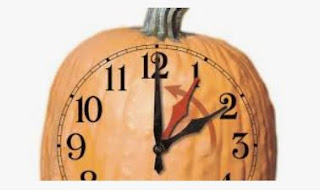The holidays are a time of celebration, and assuming you do
NOT have a problem with alcohol and can drink responsibly, it is okay to
imbibe! The key to not getting fat
from alcohol is to understand the calorie and carb content of alcoholic
beverages and plan your intake ahead of time in terms of exactly what you chose
to drink and how much you have.
All alcoholic beverages tend to drive insulin production so
they are a big no, no for diabetics and other people taking certain
medications. ALWAYS check for drug and
alcohol interactions before drinking any alcoholic beverage.
It is also important to understand that in addition to the
alcohol content itself alcoholic beverages are often full of sugar which
further drives insulin and fat production. The good news is that there ARE alcoholic
beverages that are much lower in sugar/carb and calories.
Champagne
One of the best deals for a low carb holiday beverage is
champagne! Champagnes have the lowest
carb and calorie content of any wine so are a great choice – particularly dryer
champagnes. A 4-ounce serving contains just 1.6 grams of
carb and only 84 calories making Champagne the best choice for holiday cheer!
Common White Wines
After Champagnes the next best choice is white wines (NOT
including ANY dessert wines!)
Per 5 Ounce Serving Size:
Chardonnay - 120
calories and 3.43 grams of carb
Sauvignon Blanc – 120 calories and 3 grams of carb
Reisling – 120 calories and 5.54 grams of carb
Pinot Grigio – 122 calories and 3 grams of carb
Common Red Wines
Merlot – 118 calories and 3.8 grams of carb
Cabernet Sauvignon – 130 calories and 3.82 grams of carb
Burgundy – 122 calories and 5.46 grams of carb
Pinot Noir – 116 calories and 4 grams of carb
Shiraz – 116 calories and 3.79 grams of carb
Low Carb Beers
Bud Select 55 – 55 calories with only 1.9 grams of carb
Miller64 – 64 calories with 2.4 grams of carb
Michelob Ultra – 95 calories with 2.62 grams of carb
Becks Premier Light – 64 Calories with 3.2 grams of carb
Miller Light – 96 calories with 3.2 grams of carb
Amstel Light – 95 calories with 5 grams of carb
Coors Light – 102 calories with 5 grams of carb
Bud Light – 110 calories with 6.6 grams of carb
Mixed Drinks
Liquor such as gin, vodka, scotch and rum, but are full of
calories and to some extent act as a “super” carb driving insulin and
hunger. That being said they do not
contain any carb whatsoever so as long as you mix them with no sugar/calorie
mixers you can keep your carb and calorie intake somewhat under control.
One of the best choices is Vodka and Soda Water with Lime or
Lemon coming in with zero carbs and about 100 calories! Other examples are whiskey and diet coke,
Seagrams 7 and Diet 7-up, Rum and diet cola, or Spiced Rum and Diet Ginger Ale.
What to avoid!
Watch those mixers when it comes to mixed drinks – most
standard mixers such as all sodas, fruit juices, and tonic are full of sugar
unless you use the diet versions.
All your Caribbean and Tropical drinks such as Pina Coladas, Daquireis,
Mai Tai’s, and Margaritas, etc are chock full of sugar and calories.
Set a Budget for Your
Intake!
Set a budget on your intake of alcoholic beverages and
actually keep track as you drink them making a point of knowing how much you
have had each hour. Remember each
beer, glass of wine, and mixed drink takes one hour to process for the average
male (and longer for females) so anything above 1 per hour is getting you
inebriated at some level.
In addition to budgeting your intake drink a glass of non-alcoholic,
no calorie beverage such as water or club soda for each drink/beer/glass of
wine you have to slow yourself down and stay hydrated.
If you want to catch a buzz drink your limit and switch to
all non-alcoholic beverages for 2 – 4 hours before driving.
Even better – get a designated driver or use Uber or Lyft
for travel to and from Holiday Parties!



